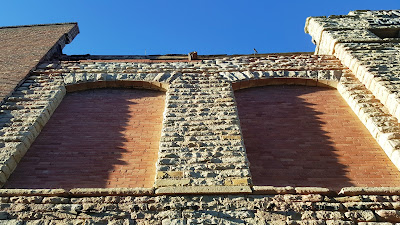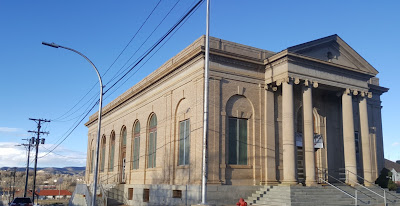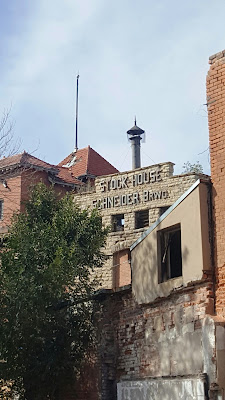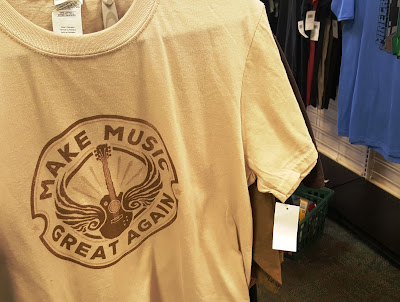Heard live on WFVR-LP 96.5FM Royalton Community Radio on 12/22/16, from 7-11pm.
I Heard The Bells On Christmas Day-- Ray Price
Jingle Bells-- Count Basie Orchestra
For Unto Us A Child Is Born-- The New Messiah
The Virgin Mary Had a Baby Boy-- The De Paur Chorus
White Christmas-- The Supremes
Parade of the Wooden Soldiers-- The Crystals
Adeste Fidelis-- Jose Melis and his Orchestra
Sleigh Ride-- Al Hirt
Hark! The Herald Angels Sing- Mass Choirs of Tascosa High School 1966
The Christmas Song-- Bela Fleck and the Flecktones
Lo, How A Rose E'er Blooming-- Mahalia Jackson
God Rest Ye Merry Gentlemen-- The Toreador Brass
Jingle Bell Rock-- The Platters
Sing We Noel-- New York Pro Musica Antiqua
It's the Most Wonderful Time of Year-- Roy Rogers and Dale Evans
What Christmas Means to Me-- Stevie Wonder
We're Going to the Country-- Sufjan Stevens
Jingle Bells-- Sammy Davis Jr.
O Little Town of Bethlehem-- Mills Brothers
And the Glory of the Lord-- The New Messiah
Blue Christmas-- "Christmas to Elvis"
Angels We Have Heard on High-- Church of the Immaculate Conception, Allentown, PA (Walter and Mary Emery, Directors)
Santa Claus Is Comin' to Town-- Diana Ross and the Supremes
Jingle Bells-- Herb Alpert and the Tijuana Brass
We Three Kings of Orient Are-- New American Guitar Ensemble
Lo, How A Rose Ere Blooming-- Sufjan Stevens
Santa Claus Is Comin' to Town-- Frankie Valli and the 4 Seasons
Frosty the Snowman-- Willie Nelson
The Shepard's Chorus (from Amahl and the Night Visitors)-- Stroud Union High School 1962
Blue Christmas-- Elvis Presley
Christmas Hymn (Palma)-- Musical Heritage Society
Holly Jolly Christmas-- Sufjan Stevens
I Know My Redeemer Liveth-- The New Messiah
The First Noel-- Frank Sinatra
Good King Wenceslas-- Mirror Image
Hark! The Herald Angels Sing-- Mirror Image
The Parade of the Wooden Soldiers-- Don Kinnier at the Longwood Gardens Organ
Lo How A Rose Ere Blooming-- Snap-On Male Chorus
Have Yourself a Merry Little Christmas-- Bela Fleck and the Flecktones
Maganese-- Riding Shotgun
Auld Lang Syne-- Mirror Image
Silent Night-- Greater Kensington String Band
Do You Hear What I Hear?-- Imogene Peise
Little Drummer Boy-- Emmylou Harris
Hallelujah-- The New Messiah
Skating-- Vince Guilardi Trio
What You Gonna Call Yo' Pretty Little Baby?-- De Paur Chorus
Children Go Where I Send Thee-- John Fahey
Poverty Carol-- University of Vermont Choral Union
It Came Upon the Midnight Clear-- Union Central Chimes (Cincinnati, Ohio)
Angels We Have Heard on High-- Don Kinnier at the Longwood Gardens Organ
Silent Night/Lord Can You Hear Me-- The Flaming Lips
The Holly and the Ivy-- University of Vermont Choral Union
Rockin' Around the Christmas Tree-- Irwin the Disco Duck
Up On the Housetop-- "Christmas to Elvis"
The Trumpets Shall Sound-- The New Messiah
Auld Lang Syne-- Lou Rawls
In the Bleak Midwinter-- Royal College of Music (David Willcocks, dir.)
What Are You Doing New Year's Eve?-- Lena Horne
Auld Lang Syne-- Aqua String Band
It Came Upon a Midnight Clear-- Don Kinnier at the Longwood Gardens Organ
Joy to the World-- Sufjan Stevens
Es Ist Ein Ros' Entsprungen-- Die Regensburger Domspatzen
Hallelujah Chorus (Reprise)-- The New Messiah
Skating (vocal)-- Vince Guilardi Trio
Keep Christmas With You-- Sesame Street
Lo, How A Rose Ere Blooming-- Bel Canto Chorus
O Come O Come Emmanuel-- E. James Kalal
Music In the Air-- Sister Rosetta Tharpe













































































